What Happened to Danny Casolaro? The True Story of “American Conspiracy: The Octopus Murders”
- Oops!Something went wrong.Please try again later.
The 1991 death of writer Danny Casolaro — and the major government conspiracy theory he was investigating — is the subject of Netflix's new docuseries 'American Conspiracy: The Octopus Murders'
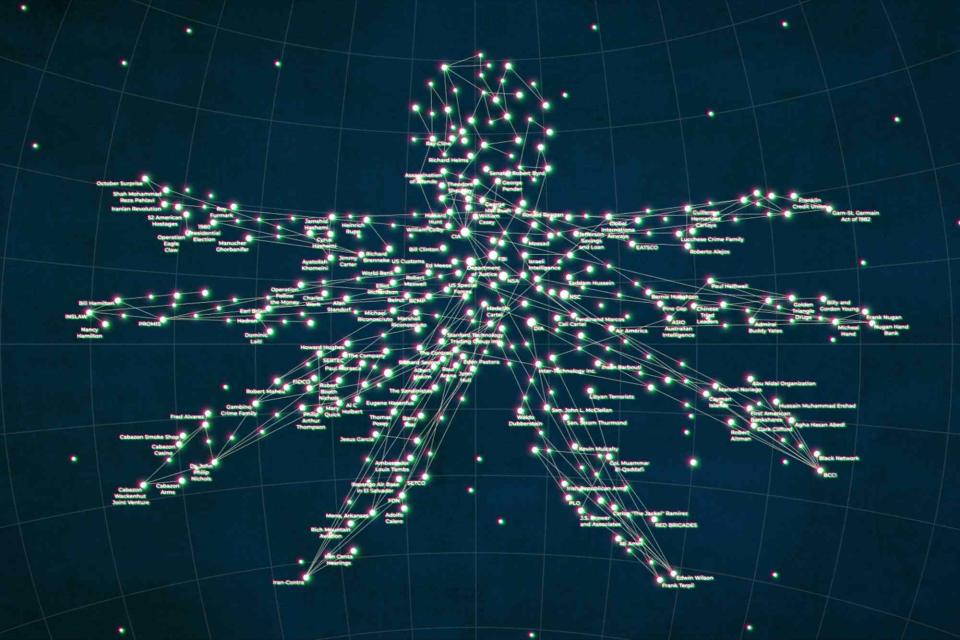
Courtesy of Netflix
'American Conspiracy: The Octopus Murders'.In 1991, journalist Danny Casolaro believed he was on the brink of uncovering a wide-reaching government conspiracy he dubbed "The Octopus" — and those closest to him are convinced it cost him his life.
Casolaro’s investigation began innocently enough: In the summer of 1990, Casolaro — a writer with more than two decades of experience — began digging into the INSLAW case at the suggestion of a colleague. The INSLAW case involved a small, St. Louis-based software company that had accused the U.S. Justice Department of stealing a breakthrough computer program they developed — and then driving the company into bankruptcy. The owners of INSLAW and their attorney had spent the majority of the 1980s battling the DOJ in court over the matter.
But when Casolaro began to investigate INSLAW in 1990, he believed he was on to a much bigger story — one he eventually dubbed "The Octopus” and planned to write a book about with the same title. Casolaro suspected that multiple well-known political scandals — including the Iran-Contra affair, the October Surprise allegations, the fraudulent Bank of Credit and Commerce International (B.C.C.I.) and INSLAW, among others — were all interconnected and engineered by an undercover global network he labeled "The Octopus."
Casolaro spent more than 12 months digging into "The Octopus" case and, in July 1991, he revealed to several family members and friends that he was on the verge of a major breakthrough. According to their accounts, Casolaro traveled to West Virginia in August 1991 to meet a key source in his Octopus investigation.
“He had been researching this thing for a long time and was very excited about the information he was finally getting,” Benjamin Mason, a close friend of Casolaro’s and the last person to see him alive, told The Washington Post. “He was in good spirits and very excited about the source he was going to see in West Virginia.”
But then, on Aug. 10, 1991, Casolaro’s body was discovered in the bathroom of his Martinsburg, W. V. hotel room. His wrists had been slashed multiple times and an apparent suicide note had been left behind, leaving local authorities and the medical examiner to declare his death a suicide. But those closest to Casolaro were adamant that he had not killed himself — and believed he was the victim of foul play.
“There is no way in the world that he would have killed himself,” Mason told The Washington Post in 1991.
More than three decades later, Netflix is taking a closer look into Casolaro and "The Octopus" with its latest crime docuseries, American Conspiracy: The Octopus Murders. The four-part series, which began streaming on Feb. 28, “pushes to uncover the secrets behind Casolaro’s death, and the story that killed him,” according to Deadline.
Here’s everything to know about Danny Casolaro, "The Octopus" conspiracy and the journalists continuing Casolaro's crusade in American Conspiracy: The Octopus Murders.
Who was Danny Casolaro?
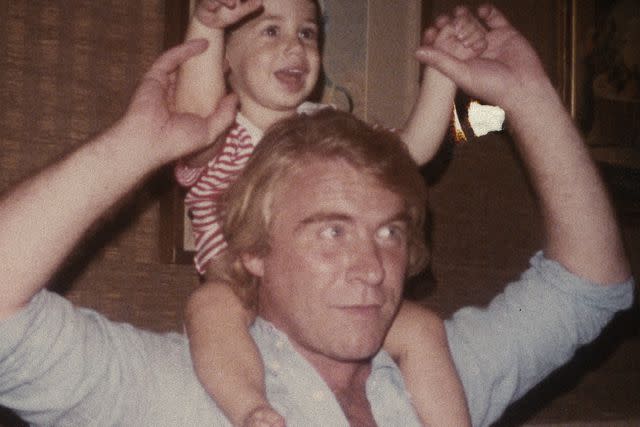
Courtesy of Netflix
Danny Casolaro in 'American Conspiracy: The Octopus Murders'.Joseph Daniel Casolaro Jr. was a freelance journalist who hailed from McLean, Va. Born on June 15, 1947, Casolaro was the eldest son of an obstetrician and one of seven children — though two of his siblings predeceased him. (A brother, born with a heart defect, died at the age of 1; and an older sister, Lisa, died from a drug overdose at 17, according to The Washington Post.)
After graduating from Providence College in 1968, Casolaro married former Miss Virginia Terrill Pace, welcomed a son (named John Daniel Casolaro III, but nicknamed Trey) and embarked on a writing career. According to a résumé of Casolaro’s from the 1980s uncovered by Vanity Fair, he was the author of two books and an accomplished “Washington correspondent." His writing was published in trade journals and supermarket tabloids such as the National Star, The National Enquirer and The Globe.
By 1980, Casolaro and Pace had divorced — leaving him with full custody of their son — and Casolaro had acquired Computer Age Publications, which published computer and data processing trade journals.
What was Danny Casolaro investigating?
In early 1990, Casolaro sold his stake in Computer Age Publications and was looking to get back into investigative reporting, according to multiple accounts. That summer, a friend of Casolaro’s (who also worked in computer trade newsletters) suggested that he look into the INSLAW case.
INSLAW was a software company founded by former National Security Agency employee Bill Hamilton and his wife Nancy. In the early 1980s, the Justice Department tapped INSLAW to develop a computer program that would allow U.S. attorneys to track criminal cases from office to office, according to American Conspiracy. The Hamiltons delivered and created the breakthrough software, called the Prosecutor’s Management Information System — or PROMIS, for short.
But then, the Hamiltons alleged that the Justice Department reneged on the contract, stole their software and plotted to drive their company into bankruptcy. By the time Casolaro connected with the Hamiltons, they had spent nearly a decade fighting the Justice Department in court over their claims.
As Casolaro began digging into INSLAW, however, he believed that it was much more than just a software piracy and bankruptcy case. Casolaro suspected that INSLAW was part of a much larger, global conspiracy that connected events including the Iranian hostage crisis, Iran-Contra affair and the Bank of Credit and Commerce International, according to The Washington Post and TIME.
What was The Octopus Conspiracy?
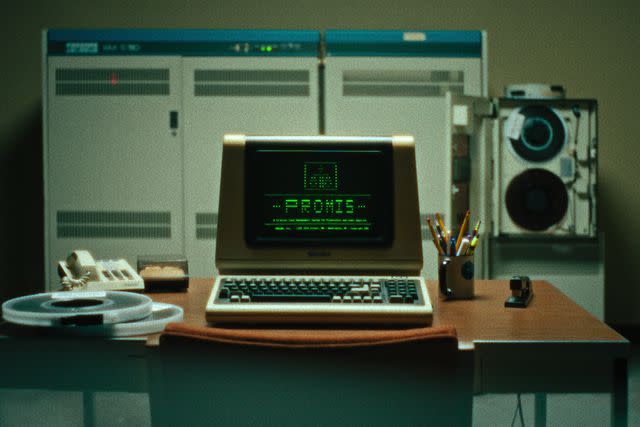
Courtesy of Netflix
'American Conspiracy: The Octopus Murders'.The Octopus Conspiracy was the theory Casolaro was investigating that suggested the INSLAW case, the Iran-Contra arms deal, the October Surprise, the closure of the B.C.C.I. and other global scandals — including Watergate and the Bay of Pigs Invasion — were all connected and orchestrated by a ring of rogue intelligence officers. Casolaro planned to uncover this supposed worldwide conspiracy and all of its various “tentacles” in a book he wanted to call The Octopus.
According to Casolaro’s book proposal — which was rejected by Little, Brown publishers in July 1991 — The Octopus promised to deliver “the most explosive investigative story of the 20th Century,” the Columbia Journalism Review reported.
“This story is about a handful of people who have been able to successfully exploit the secret empires of espionage networks, big oil, and organized crime. This octopus spans the globe ... to control governmental institutions in the United States and abroad,” the proposal continued.
What happened to Danny Casolaro?
In August 1991, Casolaro traveled from his home in Fairfax, Va. to Martinsburg, W. V. where he planned to meet an unnamed source that promised a big breakthrough in his yearlong investigation of The Octopus Conspiracy. According to Vanity Fair, Casolaro told several friends and family members that he had finally “cracked the case” — and even indicated to one friend that he was going to “meet the head of Octopus” in West Virginia.
However, on the morning of Aug. 10, 1991, the housekeeping staff at the Sheraton Martinsburg discovered Casolaro naked in the bathtub with his wrists slashed multiple times. Authorities ruled his death a suicide, based on the nature of his injuries, no sign of forced entry or a struggle and an unsigned note found in the hotel room.
In American Conspiracy: The Octopus Murders, however, many questioned the cause of death ruling, including Casolaro's friends and family members and a paramedic who was on the scene.
What did Danny Casolaro’s family say about his death?
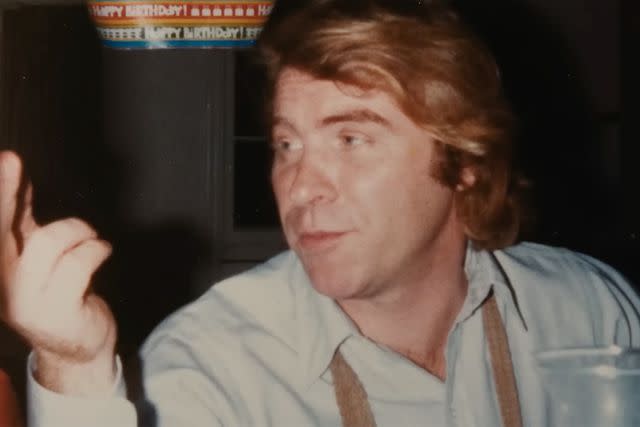
Netflix
Danny Casolaro.Those closest to Casolaro did not believe that he died by suicide.
“He was always upbeat and positive,” Casolaro’s brother, Dr. Anthony Casolaro, told The Washington Post days after his death. “He was not depressive. He was just not the type of guy to kill himself.”
But that wasn’t the only factor that led Casolaro’s family and friends to suspect foul play, his brother revealed. According to American Conspiracy, none of Casalaro's papers were found in his hotel room or his car, which appeared suspicious (because he reportedly always traveled with his files). Additionally, Dr. Casolaro told The Washington Post that his brother would have never left such a brief note — claiming that a “four-page letter” was more his style. Casolaro’s body was also embalmed by the funeral home and his hotel room was cleaned by an industrial cleaner before the family was notified about his death.
“It adds to the sense of conspiracy about this death,” Dr. Casolaro told The Washington Post in 1991.
But perhaps the most alarming piece of information was that, in the weeks before his death, Casolaro had told his brother “not to believe it” if he died in what was reported to be an “accident,” Dr. Casolaro recounted to numerous media outlets. Casolaro had also reportedly been receiving threatening phone calls at his home.
Casolaro’s close friends also found his reported suicide to be highly implausible.
“Danny hated the sight of blood,” Wendy Weaver, who dated Casolaro for seven years, told The Washington Post in 1991. “Additionally, he didn’t like to be seen naked. To be found in a tub, naked — that’s not Danny.”
“I can say that the Danny Casolaro who was my best, beloved friend, who I grieve for very much, was not a person that would have committed suicide,” added Arthur Weinfeld, a friend of the Casolaro family for nearly three decades.
Who else was involved in The Octopus Conspiracy and murders?
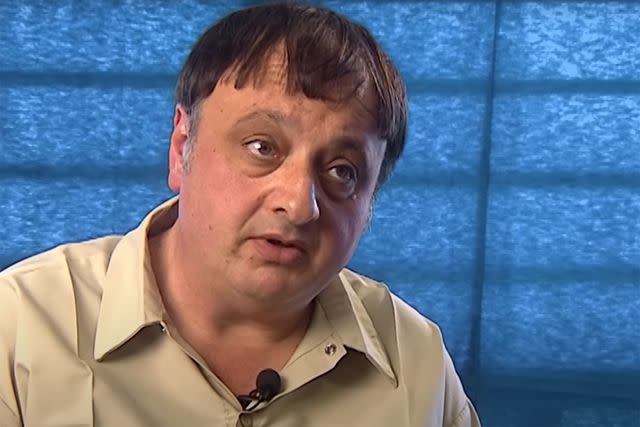
Netflix
Michael Riconosciuto.In addition to the Hamiltons and Casolaro, another key figure in The Octopus Conspiracy was Michael Riconosciuto.
Riconosciuto was an electronics and computer expert who, in 1980, was working as the research director on a weapons-design project at the Cabazon Indian Reservation in California, according to American Conspiracy. In May 1990, he claimed to the Hamiltons that, back in October of 1980, he and Earl Brian (a confidant of former President Ronald Reagan) were hired by Bill Casey (then Reagan’s campaign director) to undertake a secret mission to Iran. The mission involved transferring $40 million to “prevent a deal with the Carter Administration to release the American hostages prior to the election” — otherwise known as the October Surprise, Vanity Fair reported.
Riconosciuto told the Hamiltons that Brian’s alleged reward for participating in the supposed Iranian mission was their stolen PROMIS software — which Brian then allegedly sold to police forces around the world for profit, according to multiple outlets. (Brian, who died in November 2020, denied any connection to the INSLAW case.)
After Casolaro connected with the Hamiltons about their INSLAW case, the Hamiltons put Casolaro in touch with Riconosciuto in the summer of 1990. It was Riconosciuto — and his numerous stories of supposed government cover-ups and lies — who ultimately set Casolaro on the path of investigating the so-called Octopus Conspiracy, according to Vanity Fair.
However, in March 1991 (while Riconosciuto and Casolaro were working together) Riconosciuto ended up in jail on federal drug charges — one week after he provided a sworn affidavit to the House Judiciary Committee that was investigating the INSLAW case, per American Conspiracy. Riconosciuto later claimed in court that the drug charges were government retribution for the testimony he provided in the INSLAW case; nonetheless, he was found guilty and sentenced to 30 years in prison, according to the Justice Department. (He was later released in 2017.)
While Riconosciuto wound up in prison, several people with links to the scientist died under suspicious circumstances — including Casolaro. In 1982, Paul Morasca, an associate of Riconosciuto’s, was found murdered in San Francisco, according to the 1996 book The Octopus: Secret Government and the Death of Danny Casolaro. Another individual with ties to Riconosciuto, Alan Standorf, was found dead in his car from a blow to the head in January 1991. Standorf worked at a secret military listening post in Virginia and was allegedly providing Casolaro with classified information at the time of his death, according to The Octopus.
And Casolaro was also not the only journalist to die while investigating the so-called “Octopus.” On March 31, 1991 — five months before Casolaro was found dead — a British journalist named Jonathan Moyle was discovered hanging in his hotel room closet in Santiago, Chile, The Washington Post reported.
Though Moyle and Casolaro’s work had different focuses, they did involve some of the same individuals — specifically, an arms dealer in Chile, according to The Washington Post. Casolaro believed that INSLAW software was being sold to Iraqi intelligence officers through an arms broker in Chile; while Moyle was looking into the same arms broker for alleged weapons sales to Iraq. Additionally, Moyle’s family was emphatic that he did not die by suicide and was the victim of foul play.
What new information about The Octopus and Danny Casolaro’s death has been discovered?
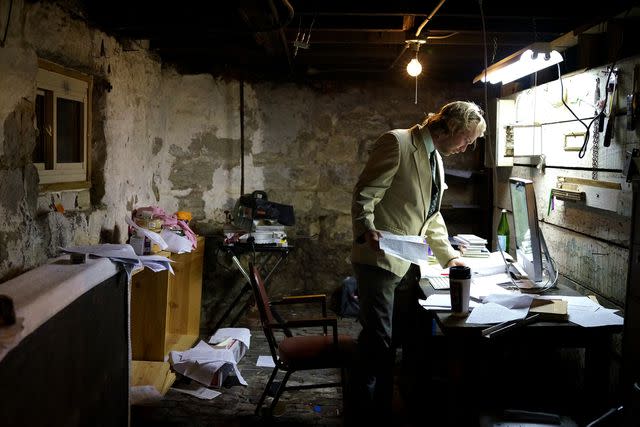
Courtesy of Netflix
Christian Hansen in 'American Conspiracy: The Octopus Murders'.In September 1992, a year after Casolaro was found dead, the House Judiciary Committee asked the Justice Department to form an independent counsel to further investigate Casolaro’s death, per The Washington Post. The committee, which had also been looking into the INSLAW case at the time, wrote in their report that “as long as the possibility exists that Danny Casolaro died as a result of his investigation in the INSLAW matter, it is imperative that further investigation be conducted.”
Two years later, in September 1994, the INSLAW case — the matter at the center of Casolaro’s Octopus investigation — was also put to rest. The DOJ released a report at that time concluding that there was “no credible evidence” that members of the Justice Department conspired to steal software developed by INSLAW. Additionally, the report affirmed police findings that Casolaro’s death was a suicide — and that there was no need for an independent counsel to look into the matter.
In Netflix's 2024 docuseries, American Conspiracy: The Octopus Murders, photojournalist Christian Hansen and director Zachary Treitz further investigate Casolaro's theory.
If you or someone you know is considering suicide, please contact the National Suicide Prevention Lifeline at 1-800-273-TALK (8255), text "STRENGTH" to the Crisis Text Line at 741-741 or go to suicidepreventionlifeline.org.
For more People news, make sure to sign up for our newsletter!
Read the original article on People.

